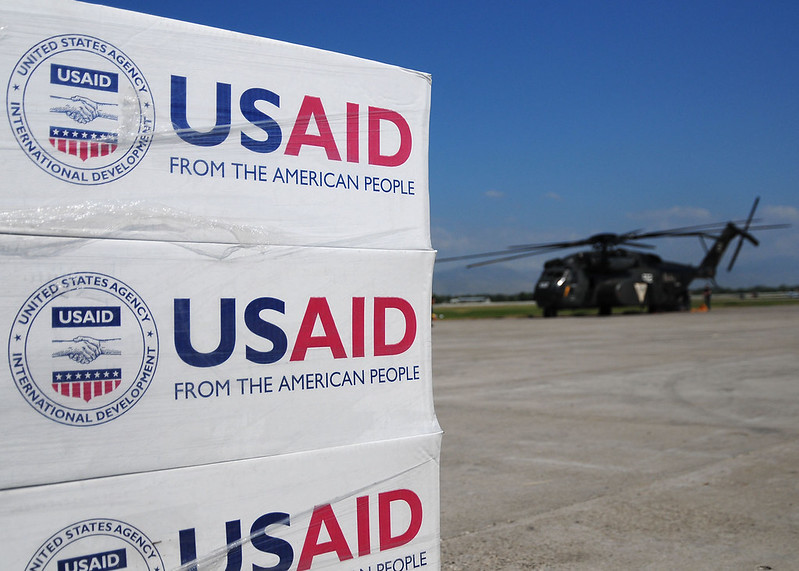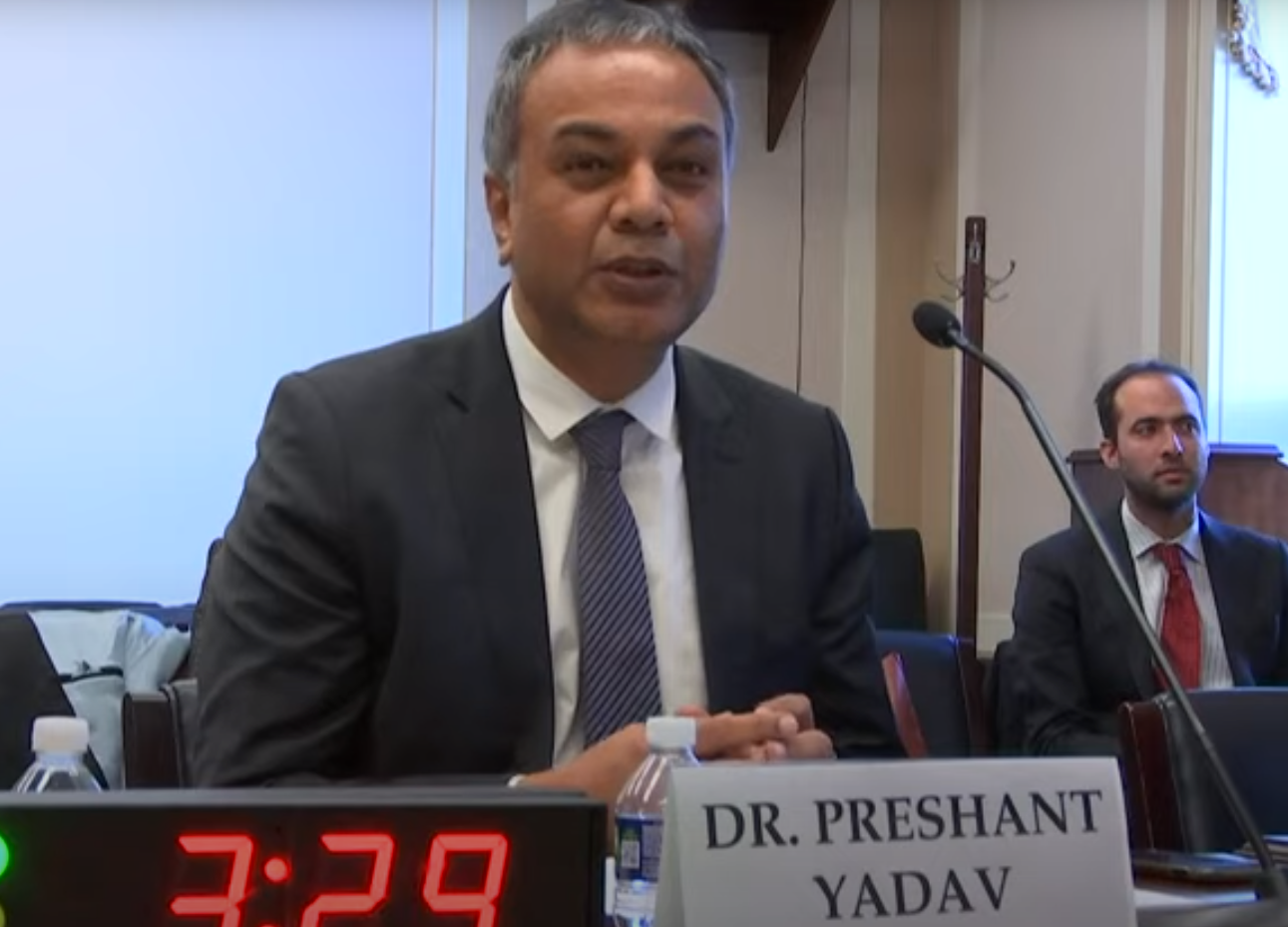Recommended

Blog Post
A new bipartisan bill, introduced today by Representatives Joaquin Castro (D-TX) and Young Kim (R-CA), looks to advance innovation in US development policy, embracing a definition of innovation that captures both technological advancements and novel approaches to development programming.
The Fostering Innovation in Global Development Assistance (FIGDA) Act would authorize USAID to provide more flexible, results-oriented funding and to incentivize high-impact solutions to development challenges. And it would empower a centralized coordinator and dedicated staff at USAID to get the job done. The measure would also codify a fan favorite, USAID’s Development Innovation Ventures.
While unlikely to move in what’s left of this year’s legislative calendar, FIGDA provides a welcome preview of what could be a bipartisan priority in the new Congress. Here are a few elements of the bill we were excited to see.
Advancing advance market commitments
FIGDA authorizes USAID to pursue a range of innovative approaches, including advance market commitments—or AMCs. In its 2005 report, CGD’s AMC working group, co-chaired by Ruth Levine, Michael Kremer, and Alice Albright, with support from Owen Barder, sought to address a longstanding issue: harmful diseases continue to afflict populations in low- and lower-middle-income countries but receive little R&D investment—often because pharmaceutical developers would face small or unpredictable markets even for successful vaccines, therapies, or diagnostics to address them. By guaranteeing demand for products that meet pre-determined specifications (using purchase commitments from philanthropic donors or governments), AMCs are designed to create a viable market for the desired solution.
Global health threats have been viewed as particularly ripe for this kind of incentivization (the first pilot encouraged development of a pneumococcal vaccine). A recent CGD paper identified opportunities where biomedical innovation could make a big difference for global health. You can read the case for deploying pull financing, such as an AMC, and more in-depth analysis on a few of those ideas here.
But AMCs and similar pull financing arrangements have the potential to drive innovation in service of high-impact solutions to other kinds of development challenges, including tackling threats posed by a changing climate and even more persistent infrastructure gaps.
FIGDA points to AMCs as one of several options for USAID to encourage innovation—though the pathways available for the agency to do so are limiting. There is some existing authority for the US government to pursue AMCs, including through the Departments of Defense and Health and Human Services. In addition, the 2008 PEPFAR reauthorization included a directive to the Treasury Department to undertake negotiations on an AMC to spur the development of vaccines for HIV/AIDS, tuberculosis, malaria, and related infectious diseases. The measure detailed the need to consider specific aspects of those negotiations, including transparency, the use of legally binding contracts, requirements for safety and efficacy, dispute settlement, and flexibility. But, to date, the US government’s engagement in AMCs has been fairly limited, notwithstanding the use of the instrument as part of Operation Warp Speed. US budget rules hold some of the blame here, but a CGD paper published in August 2021 found these obstacles were surmountable. That said, given the funding scale likely needed to spur the development of new solutions and the potential complexity of these arrangements, the United States may also wish to consider a multilateral approach that allows them to pool funding with other donors. Still, strong signals from Congress could help marshal the political support needed to elevate discussion of this underutilized mechanism.
Authorizing Development Innovation Ventures (plus US engagement in the Global Innovation Fund)
Also exciting, the bill would codify USAID’s Development Innovation Ventures (DIV). Originally launched in October 2010, DIV solicits and funds innovative solutions to development challenges, piloting candidate programs and rigorously evaluating their impact—as well as supporting the scaling of proven solutions while continuing to test their effects.
Thanks to analysis conducted by the program’s founder—Nobel Prize-winning economist Michael Kremer (an innovator of the AMC concept)—and colleagues, we know DIV’s early portfolio delivered an impressive 17-to-1 social rate of return. His study shows that while not every idea supported by DIV was a rousing success, some of its bets paid off big time, yielding gains that more than cover the cost of less fruitful investments—underscoring the value of a portfolio approach and a view of risk that recognizes its potential development payoff.
Given its track record, formal authorization for DIV seems like a no-brainer. Beyond that, DIV has enjoyed strong bipartisan support over the years: When, amid budget uncertainty, DIV suspended its application window in 2017, Congress stepped in to provide dedicated funding.
Also worth noting, DIV initiated the agency’s work on cash benchmarking, a rigorous way to measure the cost-effectiveness of aid programming, and a critical effort on the part of USAID to help ensure value for money. (One that USAID Administrator Power pledged to expand at a recent CGD event.)
Perhaps the biggest critique of DIV over the years has been that it’s not sufficiently integrated into the agency, which results in missed opportunities to leverage and learn from DIV’s investment portfolio. The bill proposes at least a partial fix by creating a Proven Solutions Program that directs USAID to identify and work to scale and integrate evidence-based innovations, including those that have benefited from DIV support.
FIGDA would also provide authorization for US engagement in the Global Innovation Fund (GIF), a multilateral effort that drew early inspiration from DIV’s model and tiers its innovation investments by strength of evidence and impact. GIF has done its own portfolio analysis illustrating the impact of its grants and investments on increased welfare, and has leveraged more than $6 of additional capital per $1 of investment on its for-profit operations.
US support for these innovation hubs accounts for only a tiny sliver of overall foreign assistance. With plenty of demand, it could be time to consider more robust commitments.
Enabling flexible, results-based funding
FIGDA also authorizes USAID “to provide flexible, results- and milestones-based funding to support expanded use of innovation, encourage improved development and humanitarian outcomes, expand USAID partner bases, and support cost-effective and sustainable-led development solutions in partnership with local and nontraditional development partners, including the private sector.” The United States’ largest bilateral aid agency has some ability to pursue aid arrangements featuring one or more of these characteristics, but they comprise an extremely small share of USAID’s overall acquisitions and assistance portfolio. Formal authorization and a clear signal from lawmakers could give a boost to those within the agency eager to do more.
CGD Senior Fellow Prashant Yadav appeared today before the House Foreign Affairs Subcommittee on International Development, International Organizations, and Global Corporate Social Impact—chaired by Congressman Castro. An expert in global health supply chains, Prashant’s testimony highlights two local social enterprises he’s observed delivering cost-effective solutions in Africa. While Prashant’s examples each received modest financing from the US government—one through DIV and another via the US International Development Finance Corporation—these locally-based firms are by no means traditional US development agency partners. But his testimony explains why the US government may be missing out. These organizations benefit from context, proximity to customers, and the ability to iterate based on experience and rapid feedback. Expanding US support for these kinds of innovative local partners could help the US increase development impact—and we hope lawmakers on Capitol Hill continue to beat the drum on the importance of locally-led development.
Ensuring coordination and staffing
Finally, the legislation would formalize the role of Chief Innovation Officer (CIO) at USAID and assign responsibility for leading efforts at the agency to incentivize innovation and pursue innovative approaches. The newly empowered CIO would also have the authority to hire “Innovation Fellows” who could be detailed across the agency to support the expanded use of technology and innovation. In testimony this spring, USAID Administrator Power pointed to the many competing demands on the agency’s “depleted workforce.” With staff bandwidth further exacerbated by a combination of urgent crises and the administration’s development ambition, centralized coordination and dedicated staffing are likely to be critical to seeing FIGDA’s goals realized.
In tackling the subject of innovation, FIGDA dares to look past the haunting memory of ill-conceived development gadgets that promised more than they delivered. And that’s a good thing. The bill recognizes that innovation involves risk. But when taken in a calculated and strategic way, paired with rigorous testing and evaluation, that risk can pave the way for more effective programming and improved development and humanitarian outcomes.
It would be a tall order to see the newly introduced FIGDA legislation advance in the waning days of the 117th Congress, but the bill is an important marker. Kudos to Representatives Joaquin Castro (D-TX) and Young Kim (R-CA) for taking a promising step toward more meaningful development innovation.
Thanks to Amanda Glassman and Rachel Silverman Bonnifield for their comments on an earlier draft.
Disclaimer
CGD blog posts reflect the views of the authors, drawing on prior research and experience in their areas of expertise. CGD is a nonpartisan, independent organization and does not take institutional positions.






